Insta360 One R Review
Insta360 One R Review
A bit like Lego, the One R is Insta360's modular action camera
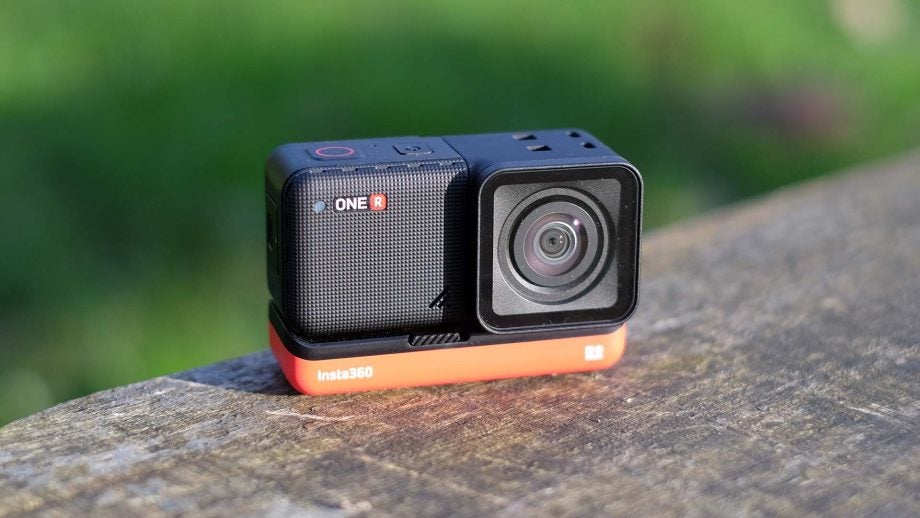
Verdict
I wouldn’t consider this a perfect buy for established YouTubers, or filmmakers who will intersperse Insta360 One R footage with that of a more traditional camera or edit on industry standard software. However, the creative potential here is huge. Multi-lens modularity aside, the app-based software offers extremely accessible dynamic editing that can be worked into a larger project if you want to get ambitious. It may not set new standards for image quality and polish, but the Insta360 One R's modular flexibility is hard to beat.
Pros
- Largely successful modular design
- Reversible screen is vlog-friendly
Cons
- Flaky software and interface
- Motion blur with low light and faster movement shooting
- Video quality sub-GoPro level, but solid
- Small screen is fiddly
Key Specifications
- Review Price: £439.99
- 5.7K 360 degree capture
- 4K/60 wide angle capture
- Up to 200fps slo-mo
- In-app editing
- Modular design
- microSD
- HDR mode
- LOG mode
- H.265/H.265
The Insta360 One R is a modular action camera. GoPro came up with a modular system for the Hero 8 Black last year, but this is next-level stuff.
Its screen, lens and battery are all separate blocks. You can choose whether to attach a standard 4K action camera, a 360-degree one or a high-end 1-inch sensor camera.
You don’t get all of these in the box, unless you buy an expensive bundle. But the “4K” plus 360 degree Insta360 One R version costs a bit less than the GoPro Max. That has to count for something.
At the time of our review the One R’s firmware needs a few updates, and raw image quality never quite reaches the heights of the Hero 8 Black. However, it’s not that far off, and is something of a Swiss army knife of action cameras.
Related: Best action cameras
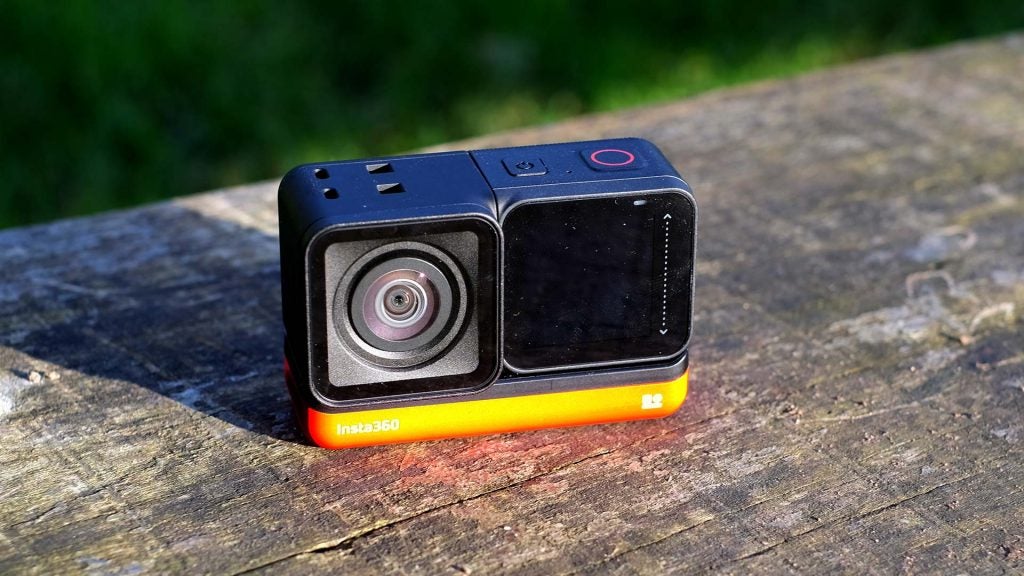
Modular Design
The Insta360 One R is the first modular action camera we have reviewed – and it is the real deal.
You can get three “personalities” for your One R right from day one. There’s a 4K action camera with a standard size sensor, a 360-degree camera, and one with a 1-inch sensor like the Sony RX0.
Insta360 sent me the Twin Edition bundle, which includes the two smaller sensor modules. But how does it all work?
It’s a bit like Lego. The block with the screen and the block housing the lens and sensor slot into each other, but it’s the battery below that locks them in place and, of course, powers the other two.
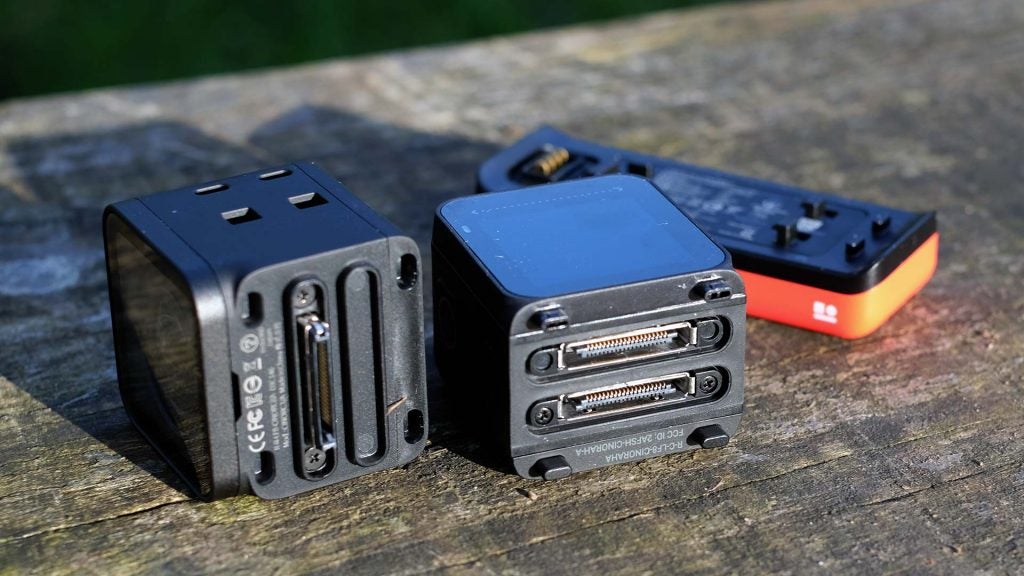
There’s a tiny bit of give to one end of the battery, the side that doesn’t actually have the power contacts. It’s the Insta360 One R’s lenses I worry about when using the camera, not the bodywork. I count that as a modular success.
The 360-degree camera lenses feel particularly vulnerable, just like the GoPro Max’s, but there are some ways to keep them safe. You get a lens cover in the box and, for mid-shoot protection, you can buy the Lens Guard kit for £29.99. This is effectively an extra layer of hardened glass to put in front of the lenses’ own glass.
These don’t add much bulk to the Insta360 One R, but the mounting case does. You need to use this if you want do anything but hold the One R in your hand to shoot. Like the Hero 7 Black and earlier models, there are no mounting points on the camera itself.
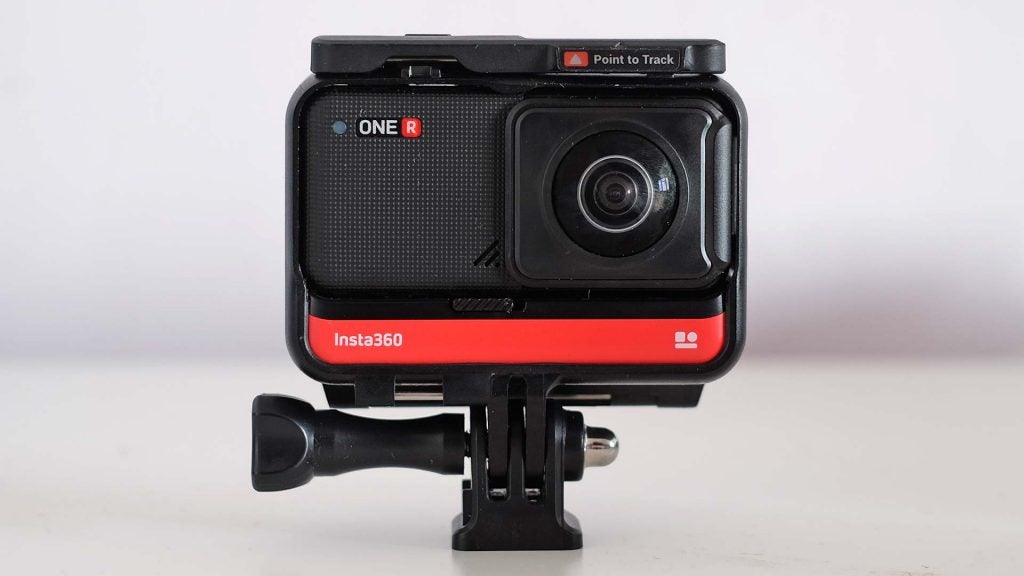
However, before you add this case, the One R is only a little bigger than a Hero 8 Black. I think that is impressive, given the extra plastic walls Insta360 had to put in place to make this whole modular project possible.
The Insta360 One R has some ruggedisation too. It is water resistant to IPX8, a certification for full submersion in water, and Insta360 has tested it to 5m depth. This is not good enough for serious underwater use, as that 5m does not test for the additional pressures involved in the movement of swimming and so on. But Insta360 will release a diver’s case accessory, ready for the pressure of depths of up to 60m.
Screen
There’s currently no screen upgrade accessory on the cards, and this part of the Insta360 One R may grate. The screen can, by design, only take up around half of the back. It leaves us with a roughly 1.3-inch LCD.
It makes the interface feel slightly fiddly to operate, and is no friend to composition or to checking out your footage post-shoot. There’s also no anti-aliasing when you review footage. It looks uncomfortably blocky.
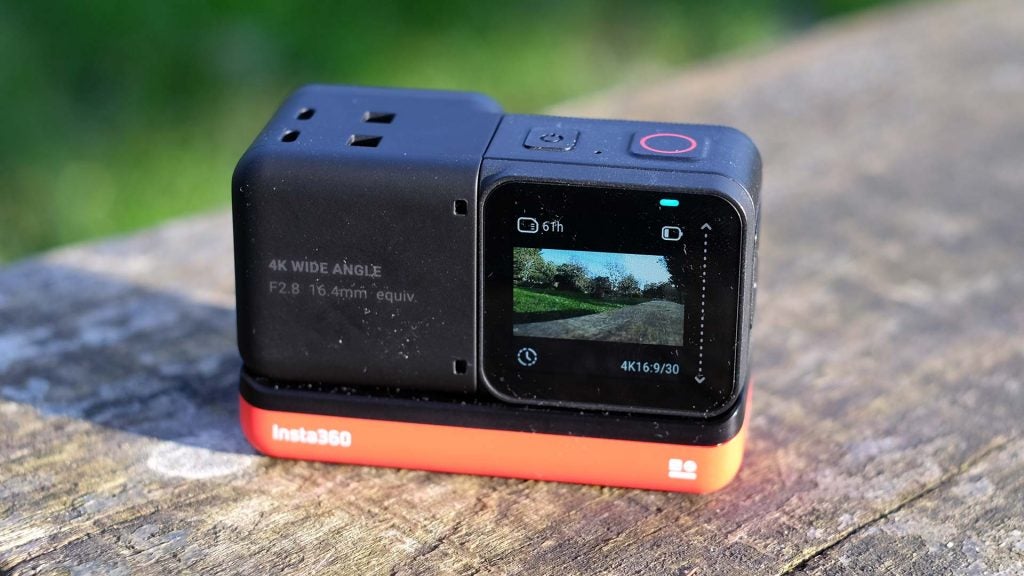
This is simply something you’ll need to swallow. But I would not say it ruined my Insta360 One R experience. You can still line up the horizon perfectly well on a postage stamp size screen.
There’s a big benefit to the screen here too. You can position it either way around when using the 4K wide angle lens. Make it a selfie or blog tool if that’s what you need. That way around it’s very similar to the DJI Osmo Action display, and in many cases is much more useful than the GoPro Hero 8 Black’s monochrome status display.

Interface and software
Handling the Insta360 One R’s interface is not a highlight of this camera, but clear work has been put in to make it fit the tiny screen.
While there is a classic text-based menu system, you rarely need to dig into it. This is nothing like the Sony RX0, and tries to put the bits you need at your fingertips, when you need them.
A flick up on the Insta360 One R screen lets you switch between modes (video, stills, HDR photo, Time Lapse and so on), and to alter shooting parameters like frame rate and resolution you simply tap on the part that shows the current res/fps.
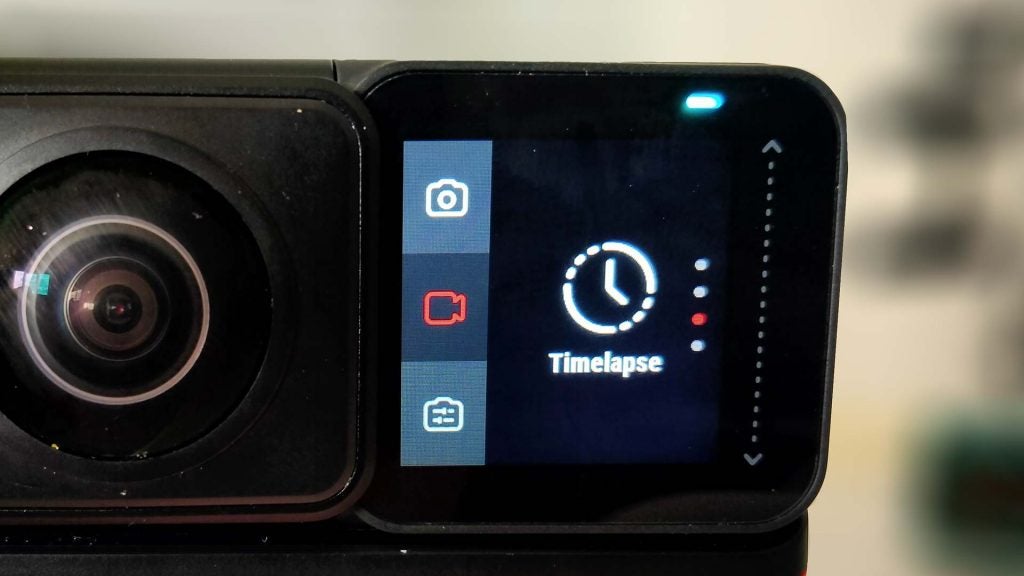
There’s more work to be done on the One R’s general stability and optimisation, though. The camera crashes every now and then, I’ve seen many disconnections when transferring data to the mobile app, crashes when rendering, and some of the in-camera menus don’t scroll as smoothly as they should.
I also can’t get the voice activation feature to work. It should let you shoot stills and video with a voice command, but refuses to listen to me with launch software.
Patience may be required if you buy shortly after launch.
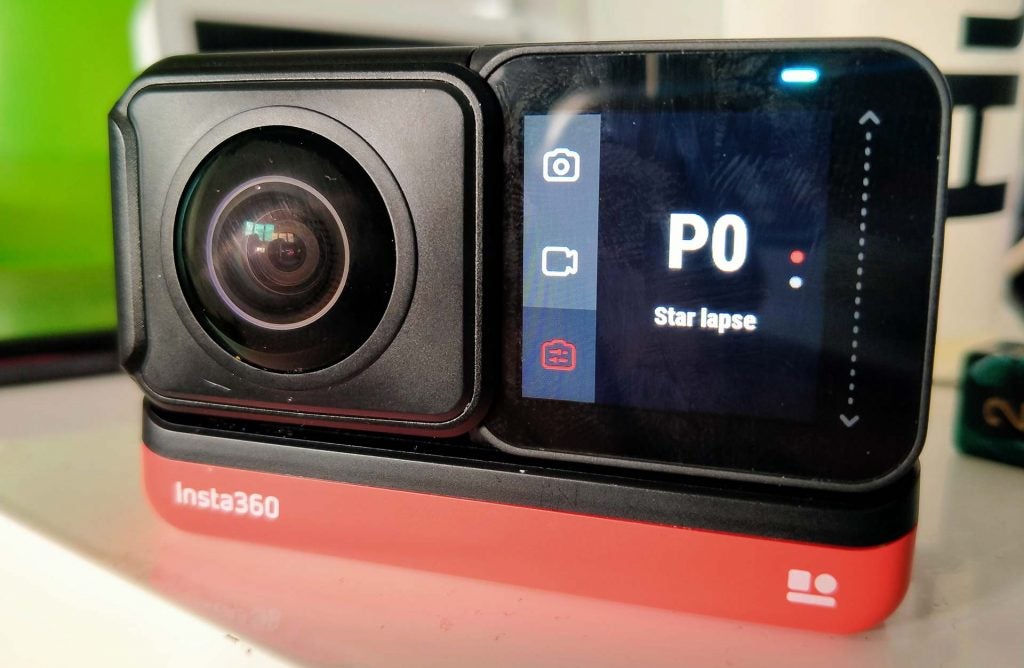
To get to your footage you need to use either a phone app or the Studio desktop application, because files use the .insv format. I tried renaming some of these as .mp4 files. Guess what? They work. However, Insta360 uses the proprietary format as a means of control, to let it apply additional processing and to handle 360-degree videos and their stitching.
Proper 360-degree stitching is an essential part of a good 360-degree camera, and Insta360 does it fairly well. You can see a slightly disconcerting wobble should you edit footage across that line, and GoPro keeps the exposure level consistent between the two lenses significantly better, but it is still good for a consumer-grade camera and not worlds apart from the GoPro Max or Fusion.
It does a good job of letting you edit 360-degree footage into a “flat” format too. It uses key frames, just like a GoPro Max. You scrub through the timeline of your 360-degree video and can, at any point, add a waypoint. Choose the field of view and framing at each of these and the app transitions between them automatically.
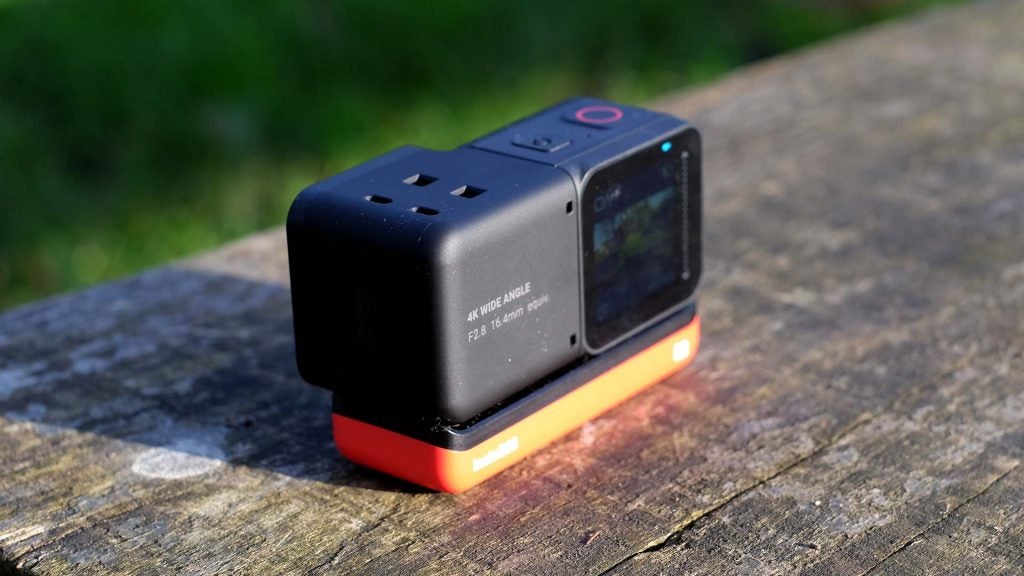
There’s also an excellent object tracking mode, which keeps the subject you tap on at the same point in the frame regardless of your movement. This is a great way to end up with footage that looks deliberately edited and shot, even if you shoot pretty carelessly and have no time to properly edit it yourself.
You can also add music, fiddle with the colour temperature and alter the speed of specific stretches of footage, from x0.5 to x6 (iOS only at time of review). There’s plenty of scope to play around.
Modes
The Insta360 One R has all the modes I would ask for. With the 4K camera you can shoot 4K at 30 or 60 frames per second. Max frame rate rises to 200fps at 1080p, and the middle-ground 2.7K resolution taps out at 100fps.
High frame rate modes aren’t labelled with a more friendly “slo-mo” tag, but switching between these settings is easy enough.
There’s HDR for video and stills, and both Time Lapse and TimeShift. Like GoPro’s timelapse and TimeWarp, these are sped-up footage modes designed for use when the camera is kept mostly still, and in motion. Insta360 has made an ultra-low light version of time lapse too but, like voice control, I couldn’t get it to work as expected. My frames ended up fatally overexposed even in very low light.
The 360-degree camera also has Bullet Time, a slo-mo mode. You swing the One R around you, preferably using the Bullet Time handle accessory rather thing just flinging it around attached to a piece of string.
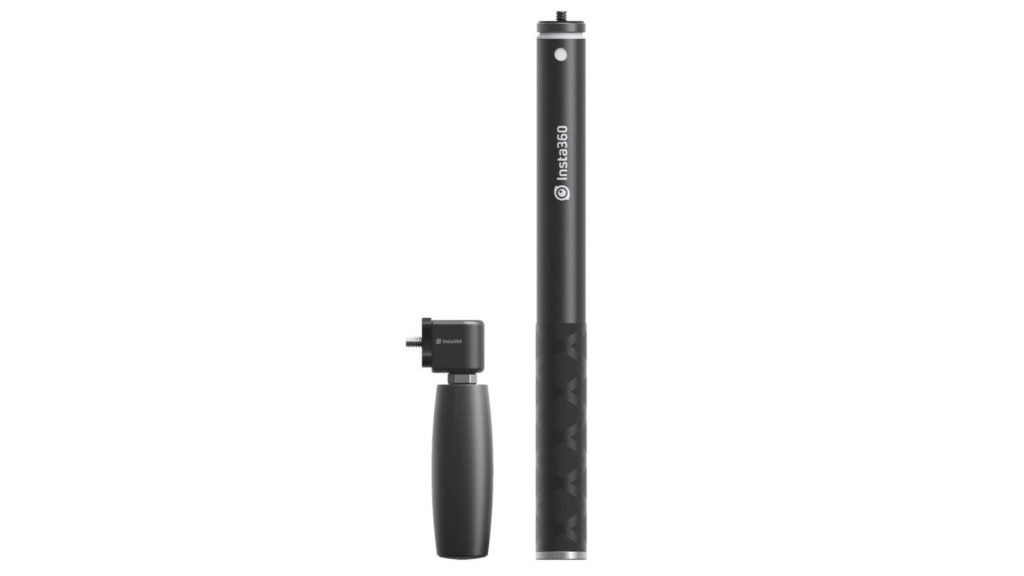
You can also change the Insta360 One R’s field of view, cycling between ultra wide, wide, linear and narrow views. However, it sits in a neglected spot at the bottom of one menu, not up front as in a GoPro. This makes sense when you actually use the camera, though.
The screen isn’t ideal for careful composition at the best of times, and you can choose the field of view when you use the phone app to process and export clips. It’s a reminder action cam views are digital zoom-based. They may also use some clever image geometry distortion reduction techniques, but there’s still a real drop in image quality when you go from ultra-wide to narrow.
Image quality
This image quality compromise is particularly noticeable when using the 360-degree camera. You can’t switch between fields of view in-camera with this module, as there’s little point, but cycling through them post-shoot is a big part of the editing of 360-degree video.
Head to the “narrow” end and your footage looks quite soft, particularly if you then zoom out to the relatively great-looking ultra-wide field of view. However, you get this same effect in the GoPro Max. You have to work around the odd limitation to get pro-looking footage in consumer 360-degree cameras like these. But after a play around with the in-app editing tools you can create dynamic-looking edits that just wouldn’t be possible with a single, normal action camera.
“Narrow” footage doesn’t look great, and the other obvious issue is the 360-degree seam. The Insta360 One R, just like the GoPro Max, uses two cameras with lenses of just over 180-degrees. Create an edit that goes through the join and you’ll see a softening of the image and a slight disturbance in the picture, as if you’re shooting through a plastic dome with a seam thick enough to distort the image a little.
However it is not much worse than what I see in my GoPro Max videos.
Insta360’s FlowState stabilisation is very effective too, with the caveat it currently has some major buggy issues when used with the 4K camera lens in particular. I’ve seen it so confused by trees towards the edge of the frame it shakes whole sections of their branches around, like a low budget horror movie effect.
This is not the part that makes me favour the GoPro image quality over the Insta360 One R’s though. It’s clearly a bug, particularly given an algorithm is to blame, not hardware.
Frame blurring in lower light or higher motion is perhaps my main issue with the One R’s image. This is the kind of side effect of movement that can’t be fixed by electronic stabilisation, and leads to more blurred textures and softened detail during motion than I see in the Hero 8 Black or GoPro Max.
GoPro’s processing is significantly better too. Its noise reduction techniques tend to reduce texture detail less in shadow areas, and result in cleaner textures even in something as fundamental as the gradient of a partially cloudy sky.
This quality gulf is most noticeable when comparing Insta360 One R to GoPro Hero 8 Black, and is primarily a reminder of the impressive fidelity GoPro has teased out of its flagship cameras. Not a reason to deride the Insta360 One R.
Insta360 also lifts the mid-tones significantly even when you don’t use the HDR mode, which can be positive. This becomes obvious when you capture scenes of high light contrast, such as shooting through a window using the 360 camera on a bright day. While the GoPro Max image will generally have greater detail, the darkest parts of the scene appear brighter through the Insta360. It’s handy for casual shooting where you’ll use the phone app to edit rather than a more involved editing suite.
Flying solo, without the market leader in direct comparison, the Insta360 footage looks good – particularly when your avoid the tricky combo of mid-level lighting and significant motion. This is the test the One R cannot always pass. For optimal image quality in a mainstream, easy-to-use action cam, we’d still stick with a GoPro.
Sound and battery life
The Insta360 One R battery design is a crucial part of the modular concept here. It keeps the other two parts together, but this also means you can’t swap out the battery in a few seconds, as you can with some rivals.
You need to unclip the cell, which powers down the camera, and to do so you’ll need to remove it from any mounting hardware. This could be an issue if you want to capture the highlights of a long off-road cycle, for example.
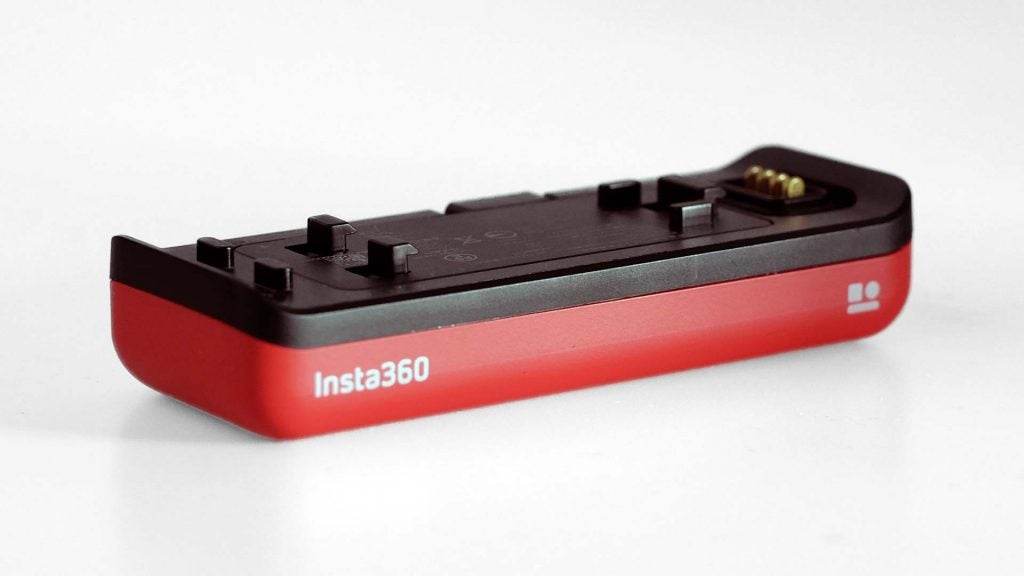
The battery itself is a 1190mAh unit, of fractionally lower capacity than a GoPro Hero 8 Black’s.
It lasts for around an hour of shooting, roughly the action camera norm. If you need more, Insta360 will also sell you a double capacity battery, listed as “available soon” at the time of review.
The Insta360 One R has two microphones, just like the One X. However, this is fewer than the three of the GoPro Hero 8 Black or the six of the GoPro Max. As such the spatial information captured is limited. Other cameras capture environmental audio better. Next to the Max the One R sounds a little flat, and the tone of captured audio is rather bright, which can make captured audio seem noisier or harsher.
You can use an external mic here, though. There’s no 3.5mm jack but Insta360 sells a USB-C adapter that adds one.
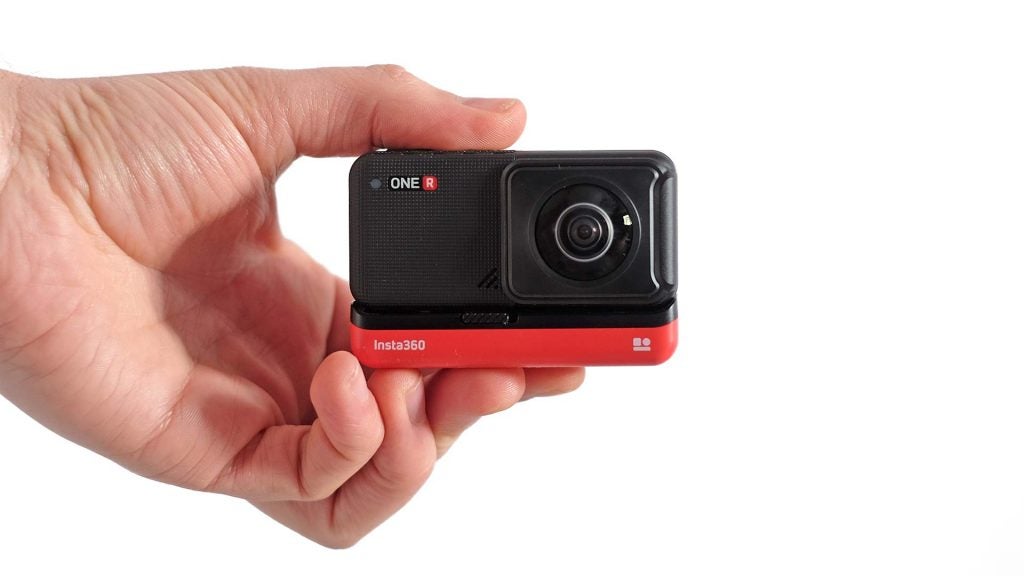
Should you buy the Insta360 One R?
A GoPro Hero 8 Black and Insta360 One X is a better combo than a dual lens Insta360 One R bundle. It is not such a great modular success you start wondering why anyone would by a relatively “single-purpose” camera like those models.
However, the clouds part once you consider the dual-module One R costs less than the GoPro Max, and that the modular design really works.
I wouldn’t consider this a perfect buy for established YouTubers, or filmmakers who will intersperse Insta360 One R footage with that of a more traditional camera or edit on industry standard software. However, the creative potential here is huge. Multi-lens modularity aside, the app-based software offers extremely accessible dynamic editing that can be worked into a larger project if you want to get ambitious.
It may not set new standards for image quality and polish, but the Insta360 One R’s modular flexibility is hard to beat.


